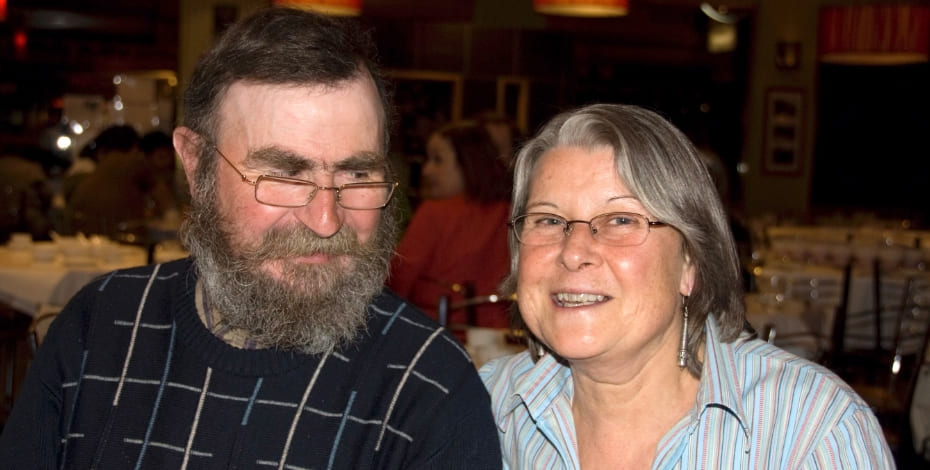
A ‘pocket rocket’ remembered

Karen Graham APAM, Mim Firth, Merryl Darby and Ingrid Howe APAM recount the remarkable contributions and impact of Robyn Sheppard, 1951–2024.
TRIBUTE In the days since her passing, numerous people have come together and talked about the many amazing traits of Robyn Sheppard.
A common theme seems to be that she was the glue that held things together.
She will be greatly missed by her family, for whom she was the rock and centrepiece.
Our thoughts are with her husband, Kevin, her two sons, Iain and James, and her beloved grandchildren, to whom she was ‘Grob’.
Robyn was also an amazing connector in her professional life, creating links throughout a career that spans more than four decades.
She had more pies than fingers to put in them.
Although Robyn technically retired in December 2020 just before turning 70 in April 2021, she ended up working casually past her retirement, and was still a very active member of the APA and the Australasian Academy of Cerebral Palsy and Developmental Medicine.
She was part of the APA branch council for most of her time in Tasmania and was the National Advisory Council representative from 2011 to 2015.
She was also a member of the APA Paediatric national group, serving on the committee as Tasmanian chair and national representative from 2003 to 2008.
Additionally, she was involved with the Australasian Academy of Cerebral Palsy and Developmental Medicine from its inception, both on the board for many years and various specialist committees.
Robyn always encouraged her staff to get involved in these organisations and to attend conferences and professional development opportunities.
In her time at Douglas Parker Rehabilitation Unit in Hobart—later known as Rehabilitation Tasmania, Calvary and then St Giles— she oversaw many changes in service provision; with the most recent being the massive task of transitioning to National Disability Insurance Scheme rather than publicly funded services.
She was also the driving force behind many services that were created or strengthened during her time leading the team.
She developed links with the seating clinic and Orthotics and Prosthetic Services Tasmania.
She created the casting clinic for clients who had just received the botulinum toxin A injection.
Robyn encouraged regular sharing of knowledge through statewide professional development days.
Merryl Darby, a close friend and colleague of Robyn’s who worked at Douglas Parker when Robyn arrived, said, ‘Any sort of relationship with RCH became easier when Robyn started working in Tasmania.’
Robyn’s footprint was on that link too.
Robyn was also an integral part of the development of Child and Family Learning Centres.
She was involved in setting up several of these centres outside of the Hobart metropolitan area.
During her years at Douglas Parker, and at the time of her death, she was a part of the Local Enablement Group in Sorell (where she lived), where a new Child and Family Learning Centre is close to opening.
Robyn arrived in Tasmania in 1995 to lead the paediatric physiotherapy team at the Douglas Parker Rehabilitation Unit.
The team she led felt blessed to have her, and all learned a great deal from her plethora of knowledge and clinical skill—although she would never admit to having a great deal of either.
The many physiotherapists she mentored, nurtured and taught were always able to call on her to ‘take a look at this’ and her input was always valuable.
Despite being a mover and shaker in the world of paediatric disability for her entire career, Robyn would always say, ‘Oh, I don’t really know that much, I just learn from the people around me.’
In reality, Robyn absorbed knowledge from all around her.
She rubbed shoulders with many of the leading researchers in the field of paediatric disability and was the perfect example of a
clinician–scientist.
She asked questions and found answers through publications, courses, conferences and trial and error.
If she did not know the answer herself, she would know where to find it, perhaps in a book written before many of her protégés were even born, or in a recent journal article.
She applied a huge variety of clinical techniques that she had in her basket—neuro-developmental treatment, conductive education, botulinum toxin A injection and casting management, provision of specific equipment and fitting of HART walkers to name only a few.
She would use whatever combination of tools she thought were necessary to treat the person in front of her, to the best of her ability.
Most of all, she would treat them as a person.
Robyn was the only therapist in Tasmania who fitted HART walkers (which she would say wasn’t that difficult, it was just like playing with Meccano), and would just glow with joy when the young person she worked with got to walk without the support of a person, often for the first time.
Robyn loved to play with equipment in general, and she would often find ancient equipment and somehow make something work to help position a client.
Colleagues from her early days at Douglas Parker have many fond memories of Robyn armed with an electric knife and foam.
She was like the MacGyver of therapy equipment. Robyn was the ultimate pocket rocket.
One of her colleagues remembers the look on her face when she realised that she did not meet the legal height to be out of a child’s car seat.
While she was a knowledgeable leader, she also genuinely cared about her staff and colleagues as people.
She would question us about our life and dreams, leave trinkets left on your desk after holidays and offer a seemingly endless supply of goodies created from her garden produce.
Her hands were always busy—she was always involved with something at work, and outside of it she was cooking, sewing, gardening or wrapping fudge.
In her absence, we will continue to have so many questions, with so many things about her activities remaining unquantifiable:
• the exact number of beautiful baby blankets she quilted for expectant parents over the years
• the number of pieces of fudge she made and distributed at Christmas every year, each individually wrapped. If you ever visited her during fudge-making season you may have seen boxes full of individually wrapped fudge, with different flavours in each box. Not small boxes, not shoe boxes, not even 13-litre boxes—we’re talking about those 50-litre boxes you get from Bunnings. She made maybe six different flavours of fudge, with each piece individually wrapped
• the number of service changes she made and supported staff through
• the number of professional development courses she attended or ran
• the number of meetings she attended to help to progress her beloved profession through the various committees she was involved in
• the number of staff she mentored
• the number of clients she supported.
Most of all, we cannot quantify how lucky we are to have known her, how much she inspired us and how very much we will miss her.
Vale Robyn.
© Copyright 2024 by Australian Physiotherapy Association. All rights reserved.





